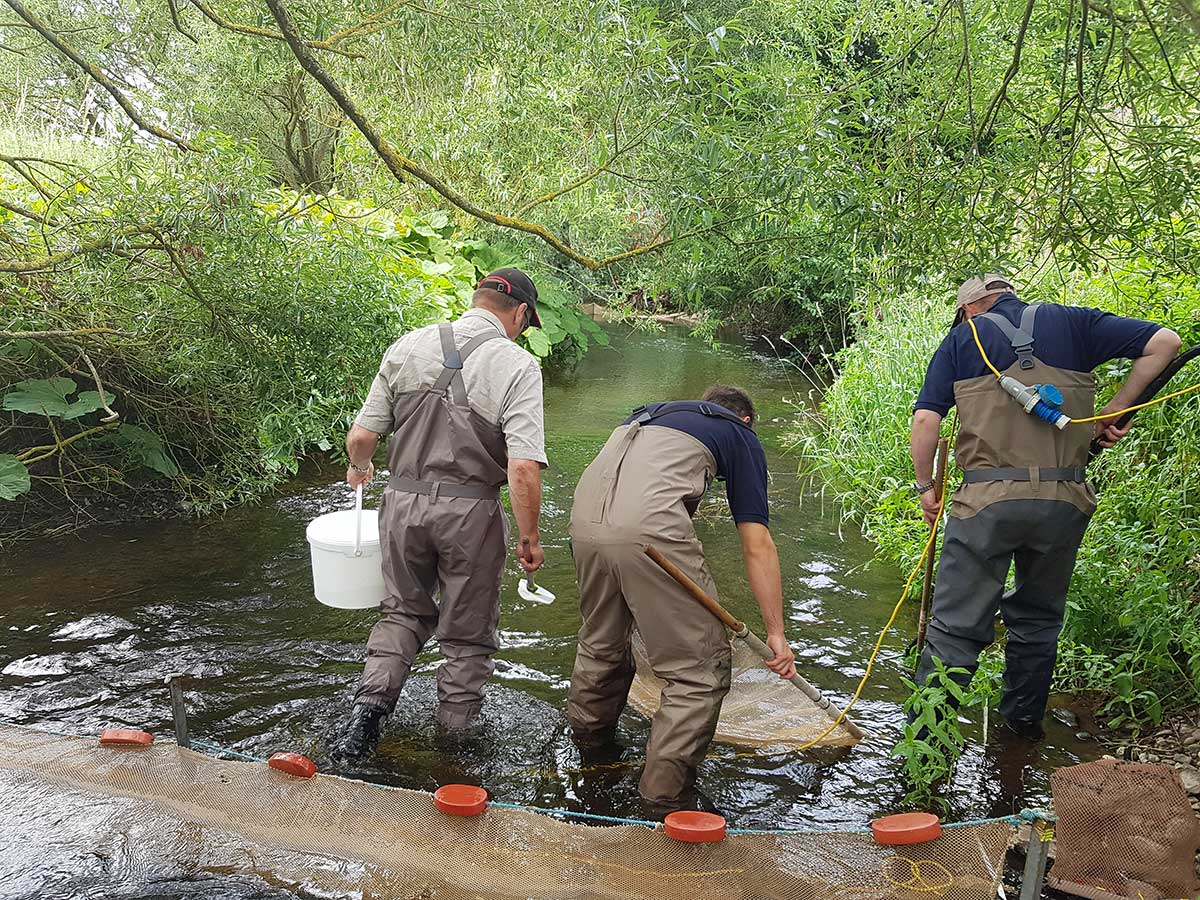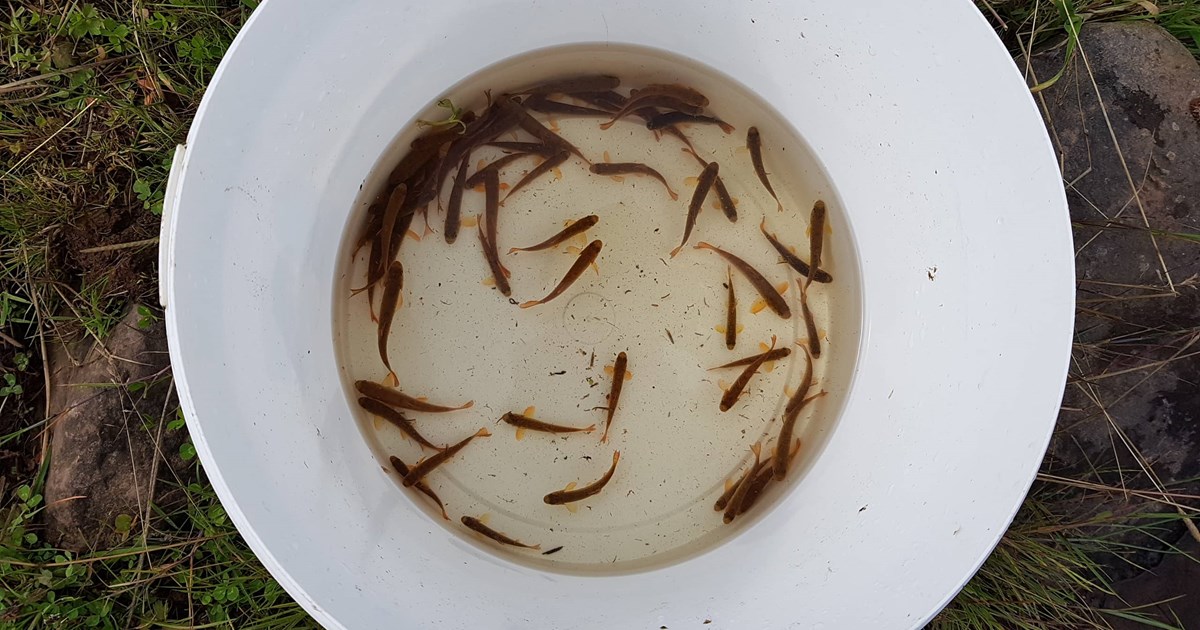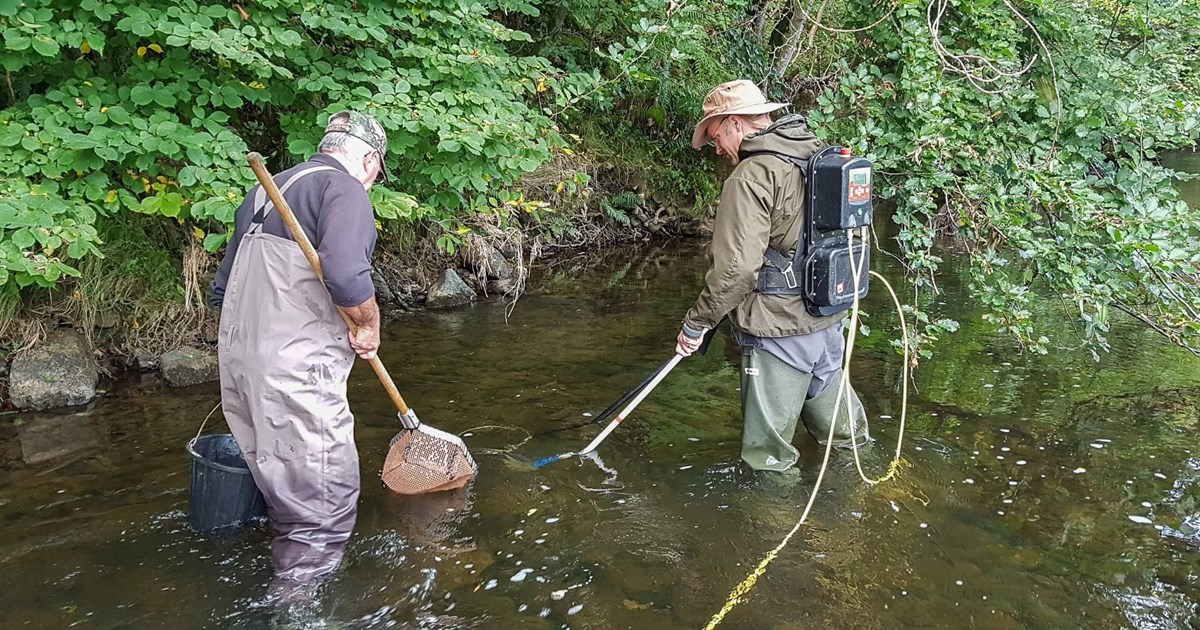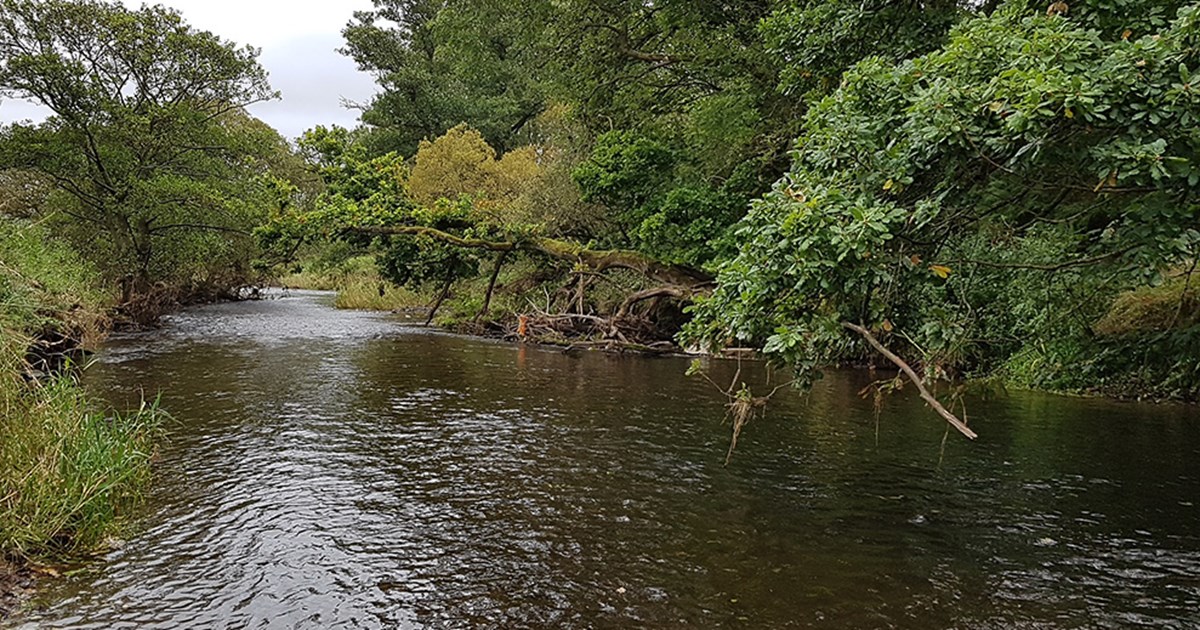Electro-Fishing
Each year The Tweed Foundation carry out electro-fishing surveys to monitor the numbers of juvenile Salmon and Trout throughout the Tweed catchment. This allows us to build up a picture of how juvenile numbers vary throughout the catchment and over time, and it furthers our understanding of how both man-made and natural factors are affecting our fish stocks. With this information we can inform management decisions on the river to help ensure that we have healthy fish stocks for future years.
What is electro-fishing?
Electro-fishing is a common method used for sampling wild fish populations. It works by placing both an anode and cathode into a stretch of water and passing a low current between the two. Doing this immobilises fish that are within the field of current, making them susceptible to capture. Once out of the current though, fish recover within seconds and can then be processed before being released back into the river.
We carry out two types of electro-fishing: quantitative and timed.
Our quantitative surveys use a standard method. First, we isolate each site using stop nets to prevent any fish from escaping or entering during the survey. We then start to electro-fish, working methodically upstream through the site.
For our timed electro-fishing we do not isolate each site. Instead, we survey each site for up to a maximum of three minutes, this giving a good representation of the numbers of fish present.
Electro-fishing plays an important role in a number of different monitoring programmes and projects we are currently undertaking.


Summer Electro-Fishing Programme
Since starting our electro-fishing monitoring on the Tweed, we have built up a network of over 700 monitoring sites across the catchment. We sample these on a three-year cycle, splitting the sites into three cohorts: those in the Gala and Upper Tweed, those in the Till and Teviot catchments, and those in the Whiteadder and Eye catchments.
Sampling these sites every three years allows us to locate areas in the catchment where numbers of juvenile fish are low, whilst also helping us to determine the areas of the catchment that are predominantly Salmon or Trout.
Monitoring Trout Spawning Burns
Each year, we carry out electro-fishing surveys on Trout spawning burns as part of the Tweed Trout and Grayling Initiative (TTGI). These surveys provide information on the health of juvenile Trout stocks, the state of their spawning habitat and whether any parts of the catchment are blocked off to trout. They also help us to better understand the relationship between the Tweed's Brown Trout and Sea Trout populations.


Smolt Tracking Studies
2020 was the second year of our Smolt Tracking Study monitoring in-river smolt survival. As part of the study, we carry out electro-fishing in the Gala Water to catch and tag Salmon pre-smolts (parr that are starting to turn silver). In theory, this allows the Salmon more time to recover after being tagged and it is less disruptive to their migration.
Gala - A Monitored River
In 2020, we started an annual monitoring programme which will allow us to link fish counter totals to Salmon fry, parr and smolt production in the Gala Water. This monitoring programme involves electro-fishing 21 quantitative sites throughout the Gala Water each year, seven of which are done annually and the others comprise sites carried out either every three or nine years. With around 10 years of data, we will then be able to generate stock-recruitment relationships that will determine the spawning targets for the Gala Water.


Ettrick and Yarrow Fry Index
Ever since 1997, we have been monitoring the fry numbers in both the Ettrick and Yarrow to obtain a fry index for the two tributaries. Both the Ettrick and Yarrow are important spawning grounds for a Spring Salmon population so, each year, we survey 100's of sites across the two sub-catchments to monitor the health of the population's juvenile stock.